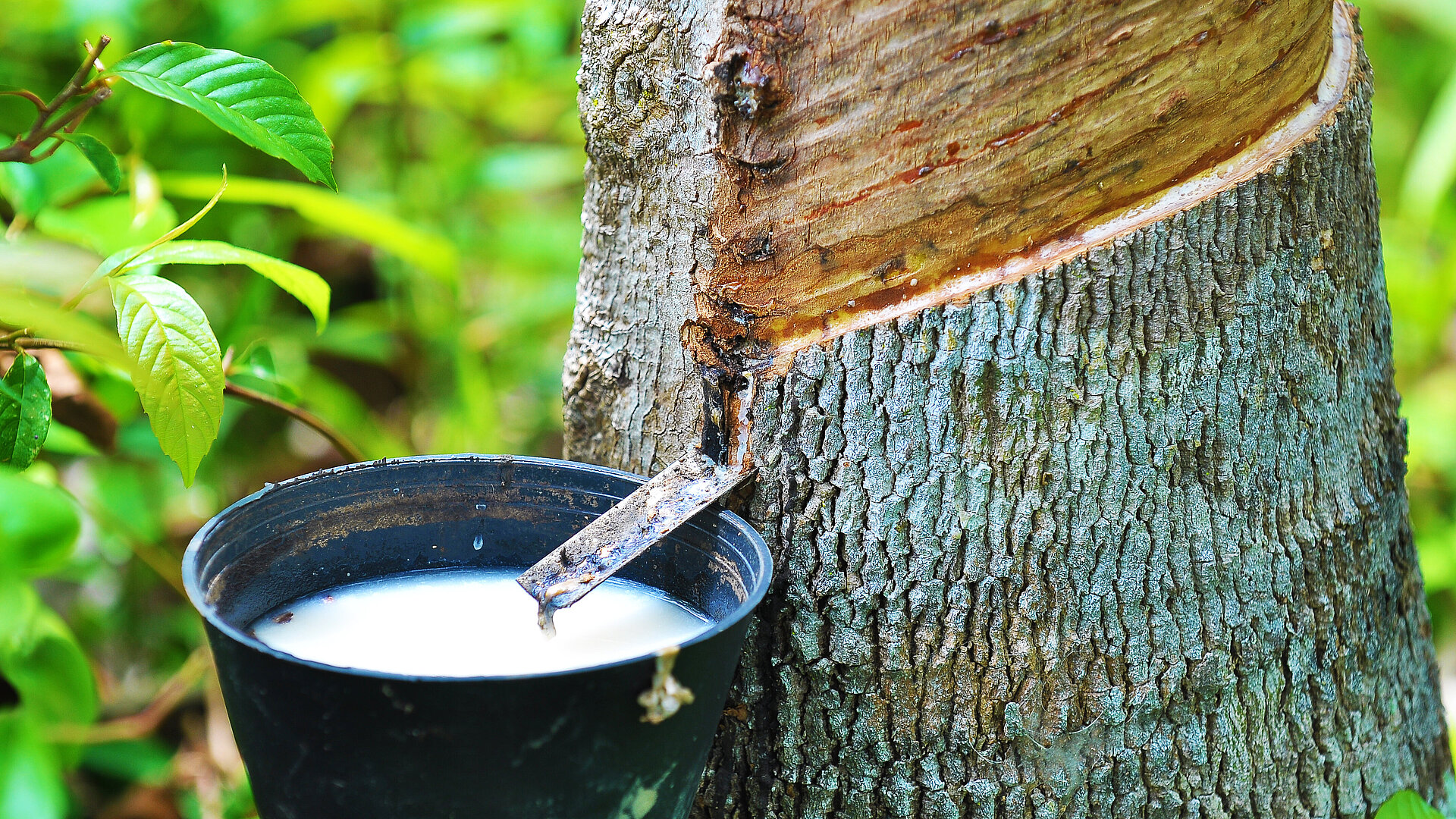As the automotive industry is in the midst of a technological shift towards electrification, there is a growing awareness of the importance of sustainability. As one of the world's leading NVH (Noise, Vibration and Harshness) experts, Vibracoustic is focused on reducing emissions as well as sourcing materials more sustainably and expanding recycling. The vision is clear: less waste, less environmental impact and a future where resources are reused.
Finding sustainable rubber sources
Since the rubber industry is still far from a circular economy and has to deal with large amounts of waste, the Green Rubber Project is tackling exactly this problem. The Material Technologies Team at Vibracoustic has set itself the goal of finding sustainable sources for rubber and looking for innovative recycling processes. The focus is primarily on natural rubber waste.
Back in 2016, the team laid the foundation for sustainable sourcing guidelines for natural rubber. These include the use of renewable, recycled and non-toxic materials for more environmentally friendly rubber compounds. Through intensive research, impressive progress has been made: Rubber compounds with a remarkable share of up to 75 percent sustainable ingredients were developed - without compromising on performance or quality.
Strictly monitor origin
Although natural rubber has a significantly lower carbon footprint compared to synthetic rubber made from fossil fuels, it is important to consider its origin as well as the social and environmental aspects of harvesting and production. To this end, Vibracoustic has invested in materials certified by the Program for the Endorsement of Forest Certification (PEFC), a leading global alliance of national forest certification schemes. The PEFC promotes sustainable forest management with independent third party certification throughout the forestry supply chain. This ensures that forestry products are produced in compliance with the highest ecological, social and ethical standards. Vibracoustic is also a member of the Global Platform for Sustainable Natural Rubber (GPSNR). This international organisation focuses on improving the socio-economic, ethical and environmental performance of the entire natural rubber value chain.
Biotechnological recycling
The Vibracoustic team is also focusing on alternative fillers made from recovered carbon black from old tyres and looking for innovative, renewable plasticisers. These approaches are not only intended to reduce the carbon footprint, but also to advance the circular economy for rubber and make production processes more environmentally friendly.
However, the true supreme discipline of the "Green Rubber Project" is biotechnological recycling. Here, Vibracoustic, Freudenberg Technology Innovation and ASA Spezialenzyme, Germany have joined forces to develop a groundbreaking technology: "BioReNa" is a process in which vulcanised, shredded rubber is treated with the help of enzymes. This creates a valuable material that can be used again in rubber compounds and products. A decisive step on the way to a true circular economy.
Dr. Melanie Gräfen, Head of the Material Technologies Team at Vibracoustic, is convinced of the mission: "In our role as a major manufacturer of rubber components and a global market leader in the development of NVH rubber compounds for the automotive industry, we have a great responsibility to find and implement more sustainable processes. The 'Green Rubber Project' can play an important role in this for us as we move towards greater sustainability."
In our role as a major manufacturer of rubber components and a global market leader in the development of NVH rubber compounds for the automotive industry, we have a great responsibility to find and implement more sustainable processes.
Dr. Melanie Gräfen, Head of the Material Technologies Team at Vibracoustic

